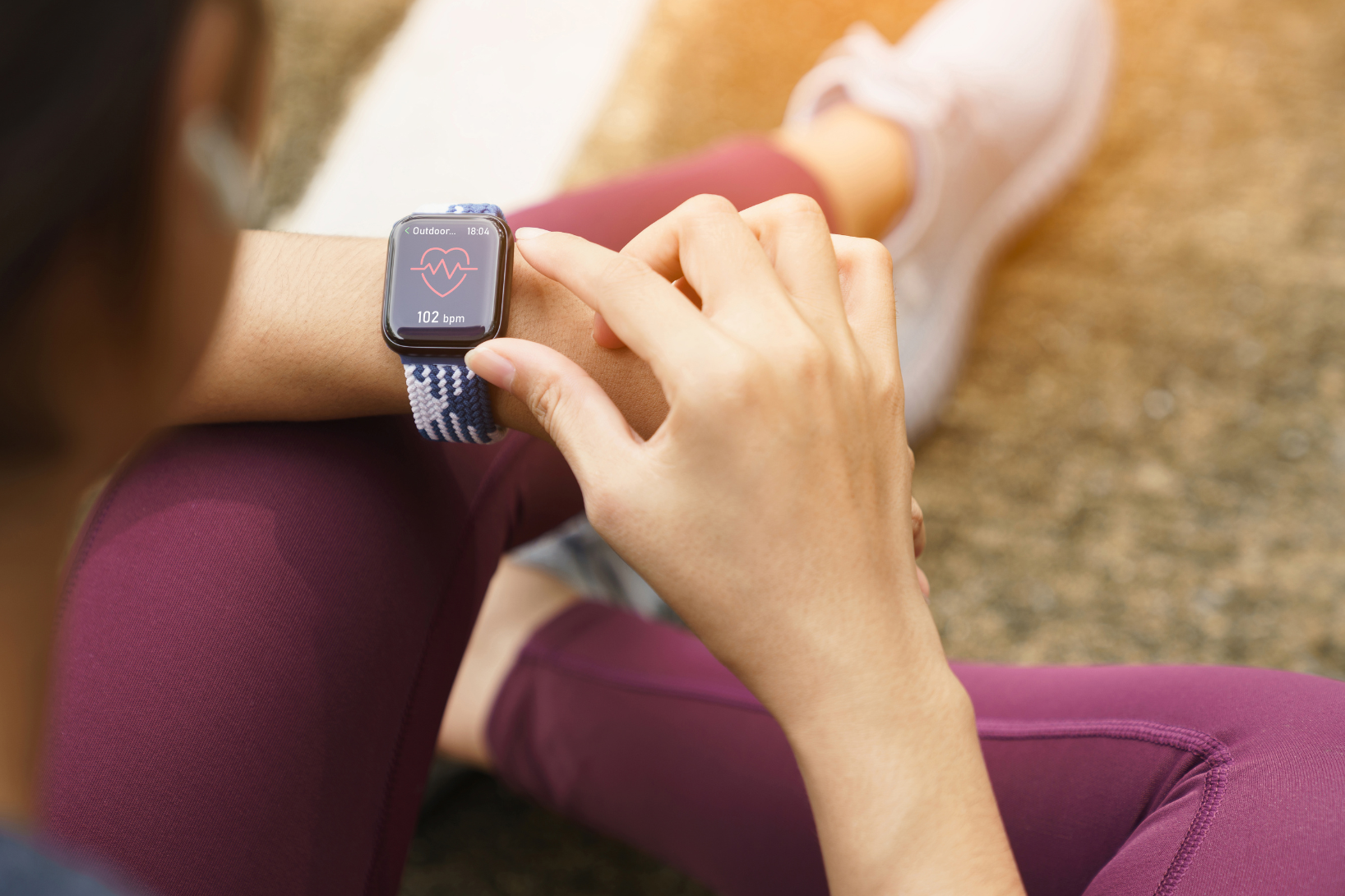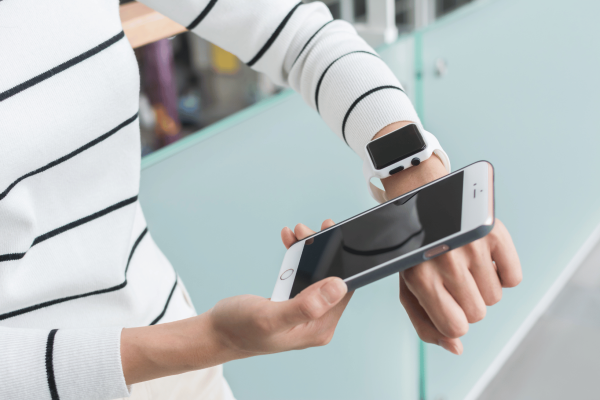In clinical research, innovations in technology are moving us down an exciting path, transforming traditional methodologies and paving the way for more efficient, accurate, and patient-focused trials. Software platforms are helping us manage clinical study data more efficiently while decentralized clinical trial (DCT) elements are expanding access to clinical research as a care option for more patients than ever before.
Wearable devices and sensors are one type of technology that promises to streamline data collection and improve patient experiences. From smartwatches that track heart rate and sleep patterns to advanced sensors that monitor glucose levels and respiratory rates, these devices offer researchers a wealth of continuously flowing data with the potential to unlock new insights and endpoints and introduce new best practices in drug development. By 2026, experts forecast that 1.3 billion people globally will own a smartwatch.
Despite their potential, the adoption of wearable technology in clinical studies has been uneven. Some researchers have been quick to integrate these tools into their protocols, while others remain hesitant. This article explores the transformative impact of wearable technology in clinical trials, addressing slow adoption rates, and underscoring the compelling reasons why researchers should integrate these devices into their studies sooner rather than later.
Why the Slow Adoption of Wearables?
Data Accuracy and Reliability
One of the primary concerns around wearables is the reliability and accuracy of the data they collect. Some researchers question whether wearables can provide data with the same level of precision as traditional medical equipment, which is subject to rigorous calibration and standardization.
The variability in device quality—ranging from consumer-grade products to medical-grade devices—also complicates their use in research. While medical-grade wearables, such as continuous glucose monitors, wearable ECGs, and blood pressure monitors are designed to meet stringent regulatory standards, consumer devices, which are more common and less expensive, often lack such rigorous oversight, with regulatory scrutiny often happening after the devices are already in use.
That said, recent studies into the efficacy of tools like Apple Watch and similar technology show promise. A recent study suggests that Apple Watch can be very effective at measuring both heart rate and blood oxygen levels. Another study involving Fitbit found that introducing a novel algorithm to the device designed to detect photoplethysmogram (PPG) peaks resulted in the ability to accurately identify patients likely to have atrial fibrillation. This was confirmed through additional ECG monitoring.
Regulatory and Compliance Issues
The integration of wearable devices into clinical research also poses regulatory challenges. Researchers must navigate complex regulatory landscapes to ensure compliance not only with established safety and efficacy standards but also with data privacy laws such as HIPAA in the U.S. and GDPR in Europe.
Data Overload and Management
Wearable devices can generate vast amounts of data, often in real-time. This capability, while advantageous for continuous monitoring and capturing nuanced physiological changes, can also lead to data overload. Researchers must have the infrastructure and expertise to handle, store, and analyze these large datasets effectively.
The challenge is not just in managing the volume of data but also in ensuring its relevance and usability in research contexts. Sifting through massive amounts of data to find clinically relevant information can be daunting. Often, it requires sophisticated data analytics tools and expertise that not all research teams possess.
Patient Compliance and Technical Challenges
Patient compliance is another critical factor influencing the adoption of wearable devices in clinical research. While some patients may be enthusiastic about using technology, others may find it intrusive or difficult to use. Issues such as device wearability, battery life, and user interface can significantly impact compliance and, consequently, the quality and completeness of the data collected.
Lack of Standardization
Finally, the lack of standardization across different devices can be a significant deterrent. There is often no consistency in how data is collected, processed, and presented among the many manufacturers of wearable devices. This can complicate the comparison of data across different studies or even within the same study if multiple types of devices are used.
Why You Should Not Wait to Integrate Wearables Into Your Clinical Trials
Data Collection Capabilities
Wearable devices are equipped with sensors and software that allow for the continuous collection of a wide range of health-related data. These devices can monitor a near limitless number of parameters like heart rate, blood pressure, blood glucose levels, blood oxygen, respiratory rates, sleep data, and more. Advanced wearables can track electrocardiogram (ECG) data, balance, and even various biomarkers through non-invasive methods.
The continuous data stream provided by these devices can be key to obtaining deeper insights into patient populations that would not have been believed possible just 10 years ago. Real-time data delivers glimpses into health status, allowing study teams to act quickly to keep participants safe and engaged in the study.
For instance, in cardiovascular studies, wearable devices that monitor ECG and heart rate can help detect arrhythmias or other cardiac events as they occur, providing data that might be missed during infrequent visits to a clinic. This gives clinical teams the ability to intervene, potentially saving a patient’s life. Similarly, for diabetes management trials, continuous glucose monitors can provide insights into blood sugar levels throughout the day, correlating them with food intake, exercise, and medication, producing clear and useful trend data that can be used to predict various outcomes.
Reducing Patient Burden
Again, one of the primary goals of using wearable devices in clinical trials is to reduce patient burden and make data collection less cumbersome and intrusive on patients’ lives. Traditional clinical trials often require frequent visits to study sites, which can be inconvenient, time-consuming, and physically taxing for participants and their families, especially for patients with mobility challenges or chronic conditions.
Wearables alleviate these issues by enabling remote monitoring. Patients can go about their daily lives while the devices collect necessary data, minimizing disruptions. This can make participation in clinical trials more appealing to some patients.
Further, wearables can increase patient engagement and compliance. They allow participants to be more actively involved in their health management by providing them with immediate feedback about their physiological states. For example, a participant in a trial may receive instant data about how they are doing on a study-specific smartphone app, encouraging continued participation and adherence to the trial protocols.
Facilitating Easy Integration of Wearables with TrialKit
Integrating wearable technology into clinical trials can seem daunting because of the complexities of data management and regulatory concerns. However, platforms like TrialKit make adding wearables to your studies simple. With TrialKit, you can build, deploy, and manage all your studies from our native mobile application and cloud-based web platform.
Wearables can be added into TrialKit as easily as any other data source, with wearable data being entered directly into your trial’s data stream, where you can access and analyze it just as you would all other study data. Today, TrialKit supports the collection of health data from Apple Watch, Fitbit, and Samsung Watch straight out-of-the-box.
Advantages of Wearable Data Integration through TrialKit
- Real-Time Data Access: Researchers can access real-time data from wearables, which can be crucial for making timely decisions during a trial, such as adjusting treatment protocols or intervening in case of adverse events.
- Flexibility for BYOD: TrialKit supports various types and numbers of devices, making it flexible to accommodate different study designs and objectives. Use Apple Watch, Fitbit, and Samsung Watch out-of-the-box or integrate any wearable device in your studies with TrialKit’s RESTful web services.
- Improved Data Quality: Continuous monitoring through wearables provides a higher granularity of data, offering more precise and less biased results than traditional intermittent assessments.
- Enhanced Patient Safety: Real-time data monitoring also enhances patient safety, as any abnormal parameters can be detected promptly, allowing for immediate medical intervention if necessary.
- Scale to the Sky: TrialKit can easily scale according to the size and complexity of the trial. The platform has supported individual studies with over 1 million patients and 1 billion data points, making it well equipped to intake and manage giga-levels of data from wearables.
- Clear, Comprehensive Reporting: TrialKit enables the standardization of reporting across different wearable devices used in studies. The platform keeps track of the specific device participants wear over the course of a study and includes this data in reports. As an example, view heart rate variability data collected from participants using Apple Watches separately from data collected from participants using Fitbits in TrialKit reports.
Removing the Risk of Integrating Wearables – No More Reason to Wait
The integration of wearable devices into your clinical trials not only holds the potential to enhance the quality and quantity of data collected but also improve patient engagement and reduce the overall burden on trial participants. Platforms like TrialKit can remove a lot of the stress and worry around adding wearables to study designs by making the integration as simple as turning on a switch.
As the adoption of wearable technology continues to grow, it will undoubtedly be recognized as a best practice in future clinical trials. By embracing these tools, researchers will, inevitably, unlock more dynamic, insightful, and efficient clinical studies.
Learn more about how to get started integrating wearable technology into your clinical trials with TrialKit.




